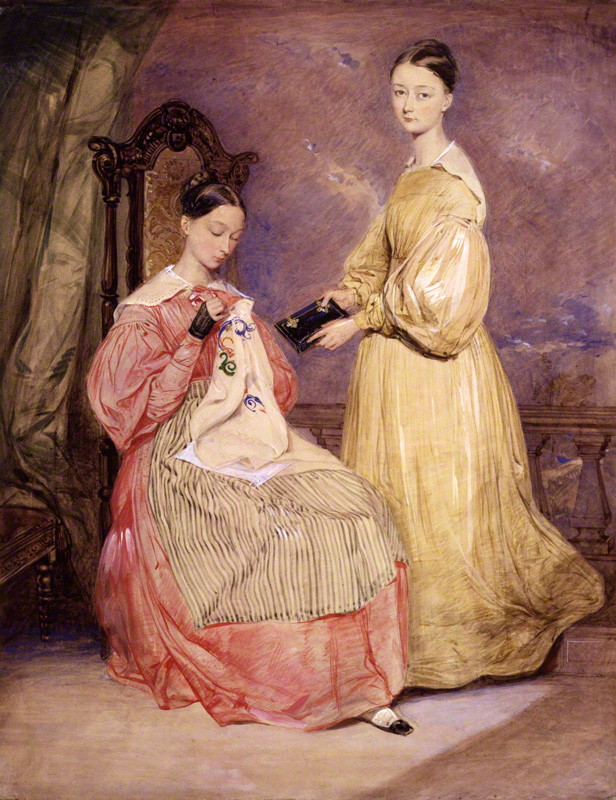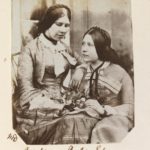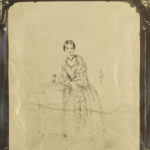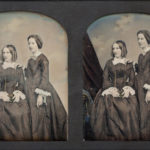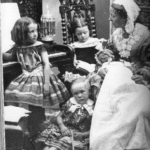Florence Nightingale & Frances Parthenope (Lady Verney) by William White, ca. 1836
Florence Nightingale (1820-1910), reformer of hospital nursing and of the Army Medical Services, with Frances Parthenope, Lady Verney (1819-1890), writer and journalist; sister of Florence Nightingale; second wife of Sir Harry Verney, Bt.
Frances Parthenope was born in Naples, Italy and was named after its Greek predecessor, Parthenope. She was the oldest daughter and child of William Nightingale and his wife, Frances Smith. After her parent’s three-year tour in Italy, Parthenope and her sister Florence moved to Embley Park, their father’s estate in Hampshire, England. During their childhood, they received numerous visits from cousins and distinguished guests. Parthenope and her sister were educated at home by a governess, although their father later taught them Greek, Latin, German, French, Italian, history and philosophy. Despite being less scholarly than her sister, Parthenope was fluent in French and developed a love for literature and art.
On 24 June 1858, Parthenope married her sister’s rejected suitor, Harry Verney, 2nd Baronet, an MP for Buckingham, who was also a supporter of liberal causes and the landowner of Claydon House in Middle Claydon, Buckinghamshire. Parthenope soon turned Claydon House into a salon for people of talent, and frequently visited her tenants.
Parthenope was an active supporter of her sister’s work during the Crimean War. As Lady Verney, she was responsible for extensively remodelling Claydon House.
In later years, the two sisters lived near each other on South Street, London.
Lady Verney wrote stories and articles for Fraser’s Magazine, Cornhill Magazine, and Macmillan’s Magazine. She also published several novels and a two volume book, Peasant Properties and Other Selected Essays. After her death two collections of her works were published: Essays and Tales and The Grey Pool and Other Stories. Her work on the Verney family papers was completed and published by Margaret Verney as Memoirs of the Verney Family during the Seventeenth Century. She was against Florence’s idea of nursing at first.
She died in May 1890 aged 71 at Claydon House, the family seat.
source: National Portrait Gallery

